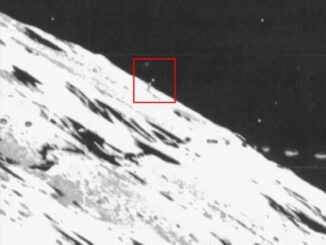
By Future Frontiers – May 3, 2025
In a world-shaking announcement today, Elon Musk revealed that Neuralink, his neurotechnology company, is preparing to roll out a revolutionary device called Blindsight—a brain-computer interface that could allow blind individuals, including those blind from birth, to see within the next 12 months.
The development is being hailed as one of the most significant medical and technological breakthroughs in modern history, with massive implications for neuroscience, healthcare, and society at large.
What is Blindsight?
Blindsight is a brain implant that directly interfaces with the visual cortex, bypassing damaged or undeveloped eyes and optic nerves. Unlike traditional retinal implants or external devices, Blindsight operates by stimulating the brain’s visual processing center directly, effectively creating a digital “visual” experience for the user.
Musk stated, “Even if someone was born blind and has never experienced sight before, Blindsight can create visual patterns and shapes in the mind. With training and calibration, this can become functional vision.”
How It Works
The system involves a tiny chip implanted into the brain. It receives data from external sensors (such as cameras mounted on glasses), processes it using advanced AI, and translates that data into neural signals the brain can interpret as visual information.
Initial tests on animals and a small number of human volunteers have shown promising results. Users were able to detect motion, shapes, and even limited objects, with clarity improving through use and training.
The Social and Ethical Impact
While Neuralink’s previous work focused on helping people with paralysis, memory loss, or neurological damage, Blindsight could represent the company’s most transformative application yet. Musk emphasized that the goal isn’t just to restore basic perception but to enable real, functional vision for those long left behind by medical science.
Many have already called this technology “the modern-day miracle,” though Musk was quick to point out, “This is not about belief or faith. It’s about engineering and science. We’re just beginning to unlock the brain’s potential.”
This raises major social and even religious questions. Some are already joking that Neuralink might “put some preachers out of business,” especially those who built reputations around miraculous healings. But for millions of people and families living with blindness, the sentiment is more hopeful than humorous.
The Future of Vision and Beyond
Musk has never shied away from bold predictions—and many have turned out to be prescient. Whether it’s space travel, electric vehicles, or AI interfaces, he has consistently pushed humanity into new frontiers.
With Blindsight, Neuralink isn’t just solving a problem—it’s redefining what it means to be human. And if this technology works as promised, it could open doors to augmented vision, real-time object recognition, and even the ability to “see” in other spectrums such as infrared or night vision.
The FDA has reportedly fast-tracked approvals for Neuralink’s next phase of human trials under the “Breakthrough Devices” program, and mass clinical implementation could begin as soon as early 2026.
Final Thoughts
Elon Musk’s Neuralink continues to blur the line between science fiction and science fact. Blindsight may soon give millions of people around the world something they’ve never had before: the ability to see the world around them.
It’s not just a medical advancement—it’s a glimpse into a future where technology and the brain work as one.


